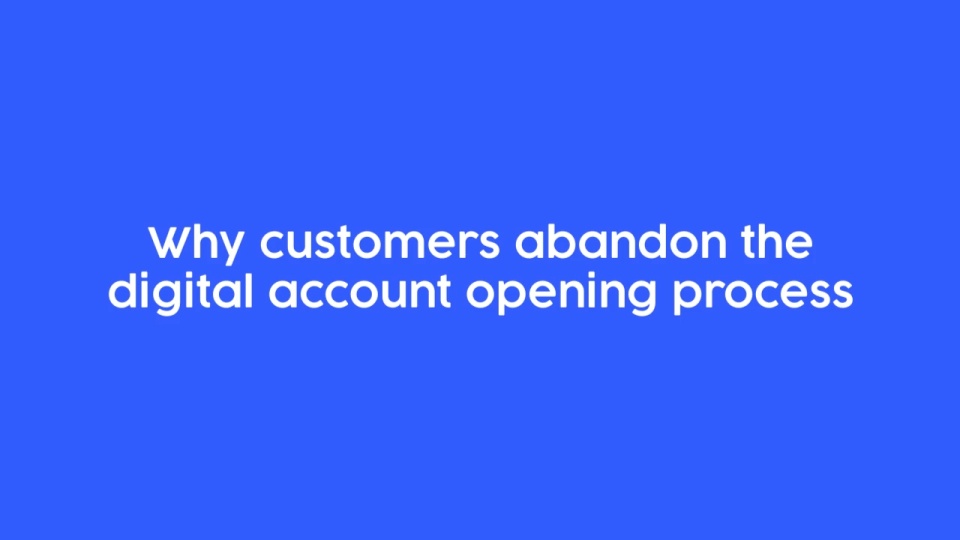
Banks are losing customers at this critical step—here’s how to stop it

Opening a bank account should be simple. Yet, many customers abandon the process due to unnecessary complexity, poor user experience, or lack of trust.
Traditional banks must prioritize seamless digital account opening experiences to increase conversions and drive customer satisfaction. If not, they are wasting money.
A recent UserTesting webinar explored how banks can optimize the digital account opening process using real customer insights. Amy Wigdahl, Principal Industry Solutions Manager at UserTesting, shared key strategies and best practices for removing friction from the process.
Today’s consumers expect banking experiences that match the ease of use they’ve grown accustomed to in retail, travel, and entertainment apps. When a mobile banking or online account registration experience is clunky, confusing, or untrustworthy, they move on—often to a digital-first competitor.
ON-DEMAND WEBINAR
From friction to conversion: optimizing digital bank account opening with customer insights
In this webinar, you'll learn:
- How to identify gaps in your digital account opening process
- Common customer frustrations driving abandonment
- Actionable strategies to reduce friction and build trust
The impact of friction in digital account opening
Friction in digital banking isn’t just frustrating—it’s costly. Customers who encounter too many steps, confusing language, or security concerns are likely to abandon the process altogether.
Common friction points include:
- Lengthy and complicated application forms
- Requests for excessive personal information upfront
- Unclear instructions or confusing user interfaces
- Lack of transparency around approval timelines
- Limited mobile optimization
“If a customer doesn’t feel confident or secure in the digital account opening experience, they will leave,” Amy said. “And once they leave, they’re unlikely to come back.”
Leveraging customer insights for optimization
The key to reducing friction and increasing conversions is understanding how real users interact with the process. By leveraging customer insights, banks can identify pain points, refine their onboarding process, and create a smoother experience.
Key strategies for gathering insights:
- User testing: Conduct usability tests to observe how real customers navigate the application.
- Customer feedback surveys: Ask users about their experience to pinpoint areas of confusion.
- Session recordings and heatmaps: Analyze where users drop off or hesitate in the process.
- A/B testing: Compare different versions of the application process to see which performs better.
“When you watch a real customer struggle with your process, it becomes clear where you need to improve,” Amy said.
Watch the video below to see and hear what folks said about the challenges they had in opening a bank account and how the experience left them feeling:

Best practices for a seamless digital account opening
Once you’ve identified key friction points, the next step is implementing improvements. Amy outlined several best practices to streamline the process and boost conversions.
1. Simplify the application process
Customers expect speed and efficiency. Reducing the number of required fields and using autofill options can significantly improve completion rates.
Quick wins:
- Minimize required fields to only essential information
- Use smart form validation to prevent errors
- Offer the ability to save progress and return later
2. Build trust through transparency
Trust is a major factor in digital banking. Customers need to feel confident that their data is secure and that the institution is legitimate.
How to build trust:
- Clearly communicate security measures and privacy policies
- Provide estimated completion times for each step
- Use customer testimonials and trust signals (e.g., regulatory compliance badges)
“Building trust doesn’t just happen at the end of the process—it needs to be present at every touchpoint,” Amy noted.
3. Optimize for mobile-first experiences
With more customers opening accounts on their phones, a mobile-friendly experience is no longer optional—it’s essential.
Mobile optimization strategies:
- Ensure forms and interfaces are responsive
- Use biometric authentication for easier logins
- Allow document uploads via smartphone camera
4. Personalize the journey
Personalization can help guide customers through the process more effectively and increase engagement.
Ways to personalize digital account opening:
- Offer dynamic content based on user behavior
- Provide contextual help messages or chatbot support
- Pre-fill information for returning users

Measuring success: tracking conversion rates
Optimization doesn’t stop at implementation. Continuous monitoring and iteration are key to long-term success. Financial institutions should track key performance indicators (KPIs) to measure improvements.
Essential KPIs to track:
- Application completion rate: The percentage of users who finish the process
- Drop-off points: Where users abandon their application
- Time to complete: How long it takes to finish the application
- Customer satisfaction score (CSAT): Direct feedback on the experience
By analyzing these metrics, banks can refine their approach and continue enhancing the digital account opening journey.
The future of digital banking
The future of digital banking lies in seamless, user-friendly experiences. By leveraging real customer insights and prioritizing ease of use, financial institutions can improve conversion rates and build long-term customer trust. Watch her on-demand webinar or read our guide on Increase digital bank account opening to get more actionable tips.
As Amy says, “The best digital account opening experiences feel effortless. The less the customer has to think about what they’re doing, the more likely they are to complete the process.”





